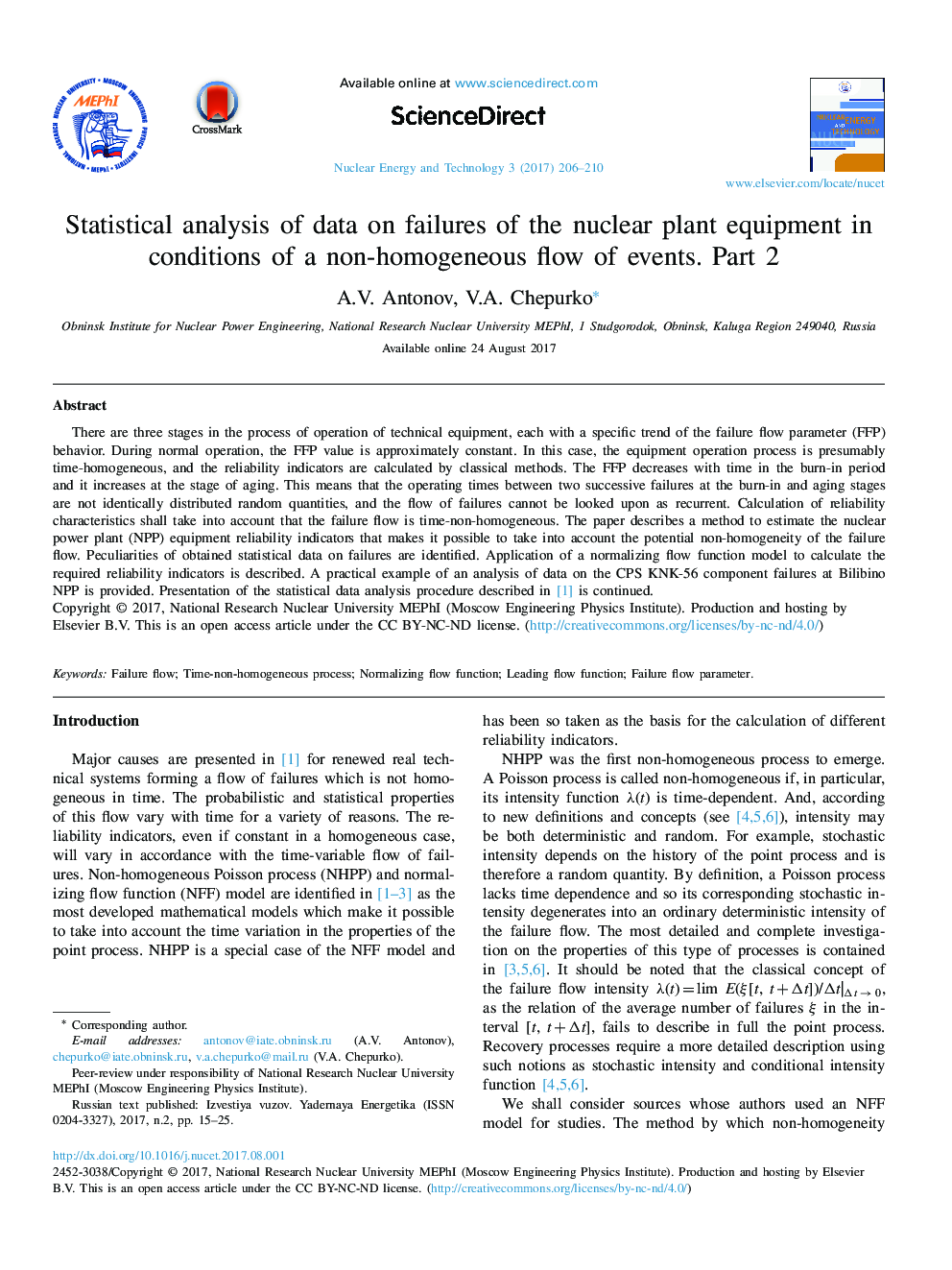| Article ID | Journal | Published Year | Pages | File Type |
|---|---|---|---|---|
| 6846068 | Nuclear Energy and Technology | 2017 | 5 Pages |
Abstract
There are three stages in the process of operation of technical equipment, each with a specific trend of the failure flow parameter (FFP) behavior. During normal operation, the FFP value is approximately constant. In this case, the equipment operation process is presumably time-homogeneous, and the reliability indicators are calculated by classical methods. The FFP decreases with time in the burn-in period and it increases at the stage of aging. This means that the operating times between two successive failures at the burn-in and aging stages are not identically distributed random quantities, and the flow of failures cannot be looked upon as recurrent. Calculation of reliability characteristics shall take into account that the failure flow is time-non-homogeneous. The paper describes a method to estimate the nuclear power plant (NPP) equipment reliability indicators that makes it possible to take into account the potential non-homogeneity of the failure flow. Peculiarities of obtained statistical data on failures are identified. Application of a normalizing flow function model to calculate the required reliability indicators is described. A practical example of an analysis of data on the CPS KNK-56 component failures at Bilibino NPP is provided. Presentation of the statistical data analysis procedure described in [1] is continued.
Related Topics
Physical Sciences and Engineering
Energy
Nuclear Energy and Engineering
Authors
A.V. Antonov, V.A. Chepurko,
